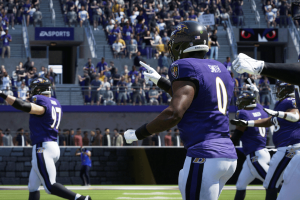The story of the Chippendales and its Founder, Steve Banerjee, is an interesting one, and one that we can all get to see by watching the new drama series put out by Hulu: Welcome to Chippendales. Steve Banerjee is played by Kumail Nanjiani. There is also a docu-series, Secrets of the Chippendales Murders.
Steve Banerjee, being an Indian Immigrant to America, is perhaps not the persona you would expect to be associated with entertainment involving men stripping down in nightclubs for a female audience. But it was Steve Banerjee who started what was to become the highly successful male strip club in Los Angeles in 1979, known as Chippendales.
And though this was a far cry from what was expected from an immigrant from South Asia to the US at that time, Banerjee went on to make huge sums of money from a franchise that became incredibly successful.
The story of Chippendales includes sex, drugs and murder and over time has created an aura of mystery around the story of Steve Banerjee. In the US most people have heard of the Chippendales brand, in the same way they will have heard of Vegas casino online real money, but many may not associate the name with Steve Banerjee. In India neither name will strike a chord. Now, almost three decades since Banerjee’s death, his story is being revisited.
Scott MacDonald, co-author of Deadly Dance: The Chippendales murders, says “Most people would think that the founder of Chippendales was an outgoing party animal who chased women, did drugs and drank heavily but Steve was a reserved, controlled man with a clear goal of creating a worldwide brand to rival Disney, Playboy or Polo.”
Before the Chippendales, gay bars were the only place that one would see male strippers.
According to the historian, Natalia Mehlman Petrzela, Banerjee is “a unique part of the story.” Banjeree was the complete opposite of all that the Chippendales represented, “the white, blonde, Californian man”. He was brown, stocky and wore glasses.
Banerjee left India in his early 20s and arrived in Canada in the latter half of the 1960s, and then onto California where he became the owner of gas station in Los Angeles. But Banerjee was ambitious and according to Petrzela would tell the owners of the fancy cars that came o fill up their tanks that “I want to be driving that car.”
Spoiler Alert: for those watching the Hulu drama, the following may include spoilers…..

The early days
It was in the 70s that Banerjee purchased his first bar, Destiny II, in Los Angeles. In an effort to attract people he would offer all kinds of entertainment from magic shows to women wrestlers.
By 1979 the club had changed its name to the Chippendales in an effort to promote a more sophisticated air. And it was at this time that night club promoter, Paul Snider proposed the idea to Banerjee to bringing in male strippers to entertain women clientele. They began advertising these shows in specifically female domains, like hair salons and female restrooms. It wasn’t long before the Chippendales were full practically every night.
In a nod to Hugh Hefner’s Playboy bunnies the men donned cuffs and collars and skin tight black pants.
The Chippendales occurred at the same time as the sexual revolution and women’s newfound sexual freedoms. In the docuseries, Barbara Ligeti, a club promoter says “Women needed a place they could have a blast and be exonerated. They could see each other, have a few drinks, pinch a butt, put $20 in a G-string of a good- looking guy.” Banerjee looked up to Hefner and Walt Disney and was eager to create something that could be up there with what he considered the best.
Big changes in the 80s
Nick De Noia, director and choreographer, met with Banerjee in the early 80s and made the suggestion to upgrade the already very successful show. He suggested turning the show “into an interactive, theatrical production using characters and storylines.” With De Noia’s help the Chippendales arrived in New York and the production successfully toured all over the US.
However, things began to turn sour between the two men as De Noia began to be the face of the Chippendales brand and Banerjee was hidden away running things in Los Angeles.
Eventually the partnership fell apart with De Noia saying he had plans to found his own company. One former colleague at Chippendales said this really sent Banerjee reeling out of control. And according to Petrzela “He felt that if others succeeded, that would necessarily take away from his own success.”
Banerjee employed a friend, Ray Colon, to ‘deal’ with rival strip clubs that were popping up. And in 1987 Colon, with a second person entered De Noia’s office and shot him dead. Many people suspected that Banerjee was involved in the killing but it took many years before the FBI made the connection.
The Chippendales continued touring in the US and in Europe and continued to grow and according to Bruce Nahin, Banerjee’s lawyer “the murder didn’t affect the brand at all.”
The beginning of the end
In 1991 the Chippendales were touring in the UK. It was here that Colon was told by Banerjee to “take out members of a rival troupe” who were previously his dancers. The plan was to use cyanide to kill them. However, the FBI got wind of the plan and Colon was arrested and charged with “conspiracy and murder for hire.” Evidence was apparently found during a search of Colon’s house.
Following Colon’s arrest, he remained loyal to Banerjee for sometime but after learning that Banerjee refused to pay for his defense, he finally broke with him. In 1993 Banerjee was arrested by the FBI with the help of Colon and charged with “racketeering, conspiracy and murder for hire” as well as other things. Banerjee pleaded not guilty.
Finally, as the trial continued a plea deal was agreed. Banerjee would go to prison for 26 years and he would lose the ownership of Chippendales to the US government.
The lawyers worked hard to try to keep the ownership in Banerjee’s hands but they failed. Banerjee killed himself in prison the day before sentencing in October 1994.
Anirvan Chatterjee, a walking tour guide in Berkeley of Asian radical history says “Banerjee’s life was the funhouse mirror version of the standard 1990’s Indian California business story.” It was the exact opposite of every stereotype of the Asian community. Even though it seems that Banerjee had made great efforts to assimilate and become a real Californian businessman, he never quite made it. Petrzela said “It’s clear other people always saw him as very foreign and very Indian. Even in death, the first thing that people did when commenting on him is start imitating his accent.”






 Your total news and information resource for all things Science, Technology, Engineering / Mathematics, Art, and Medicine / Health.
Your total news and information resource for all things Science, Technology, Engineering / Mathematics, Art, and Medicine / Health.
Leave a Comment